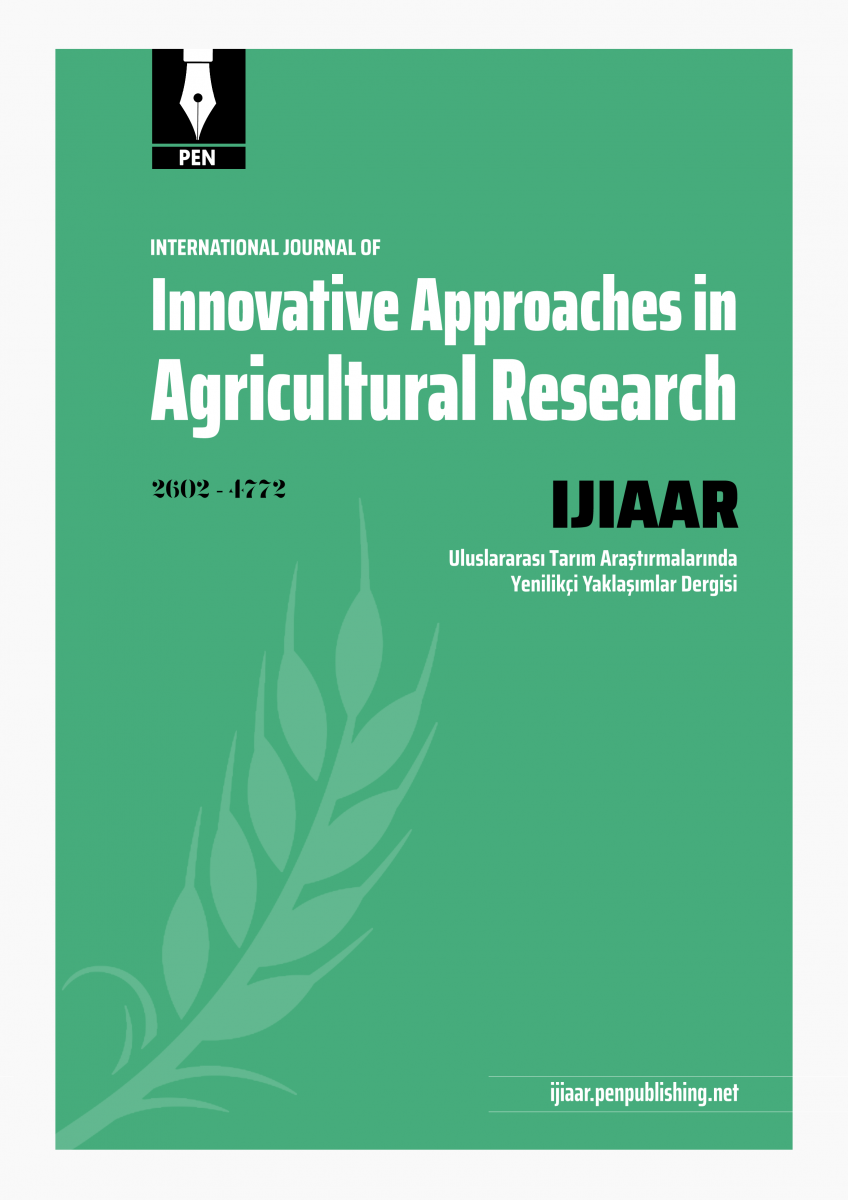Original article | Open Access
International Journal of Innovative Approaches in Agricultural Research 2019, Vol. 3(2) 183-192
Evaluation of New Cotton Linesin View of Selection
pp. 183 - 192 | DOI: https://doi.org/10.29329/ijiaar.2019.194.4
Published online: June 30, 2019 | Number of Views: 174 | Number of Download: 706
Abstract
The selection value of 8 new cotton lines and the standard variety was studied on the base of significant differences between the most important agronomic characters and their phenotypic stability, over a four-year period 2014-2017. The years of the investigation appeared to be as different ecological environments. Four stability parameters - bi (Finlay and Wilkinson, 1963), σ2i and S2i (Shukla, 1972) and YSi (Kang, 1993) were used. It was found that the studied cotton lines interacted significantly with the environmental conditions (years) in terms of total yield, boll weigt, fiber length and lint persentage. All lines had bigger breeding value than the standard cultivar Chirpan-539 exceeding it by one or more traits. In a complex assessment as best line for the studied period outlined No. 550 distinguished by 9.7% higher yield than the standard, 0.4 mm longer fiber and 1.2% higher lint percentage. This line showed stability for the ball weight and fiber length, and responsiveness above the average to the environmental conditions for the seed cotton yield and lint percentage, but both traits were with low stability. Lines Nos. 553 and 426 showed a high average level and high stability for yield, Nos. 489 and 535 – for ball weight, No. 553 – for fiber lint percentage and No. 489 – for fiber length, which makes them very valuable for the selection of these traits. A complex breeding value (average level and stability) for all studied traits was found for line No. 553.
Keywords: G. hirsutum L., Genotype-inveronment interaction, Phenotypic stability, Agronomic traits
| How to Cite this Article |
|---|
|
APA 6th edition Harvard Chicago 16th edition |
| References |
|---|
|

